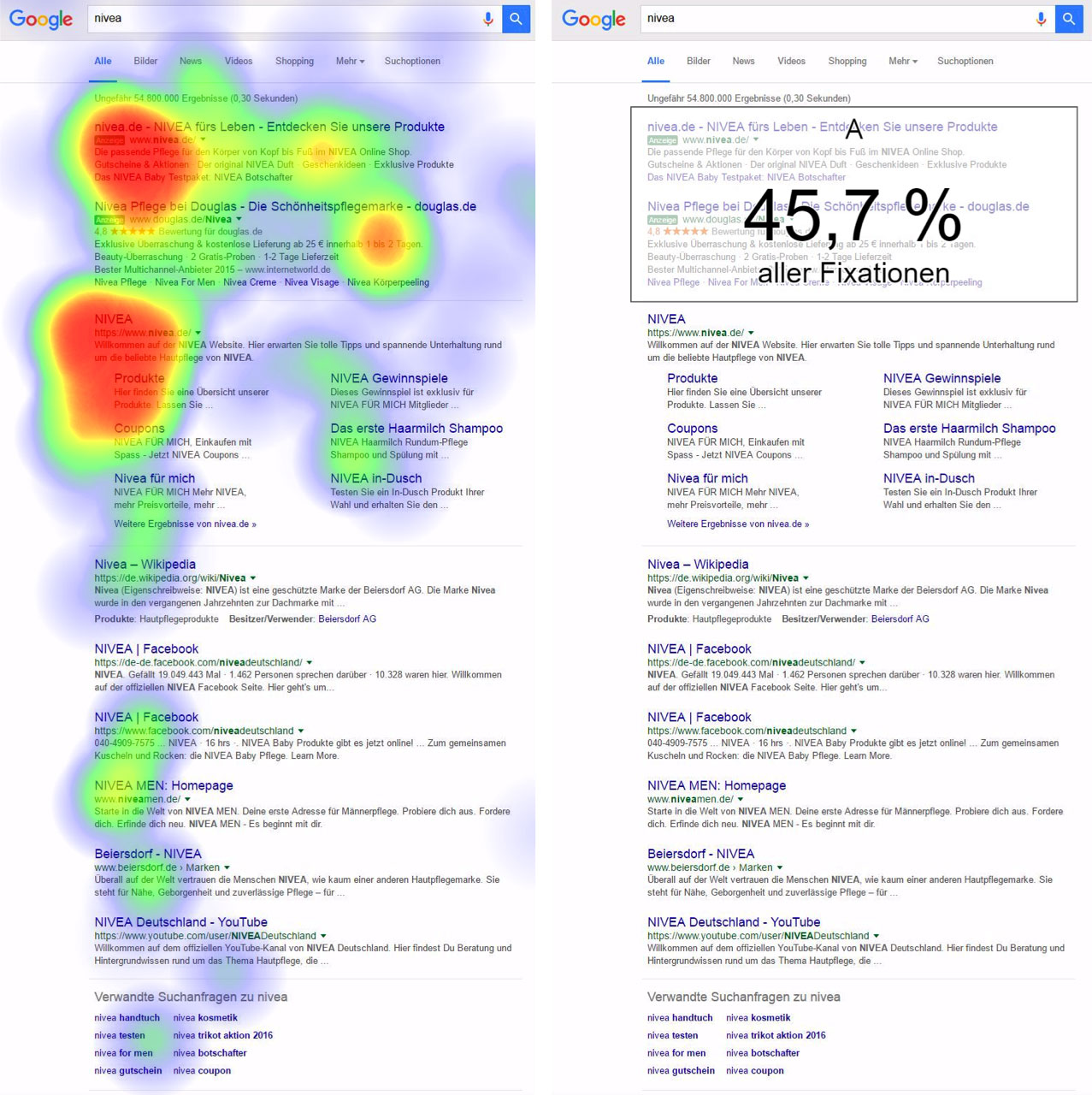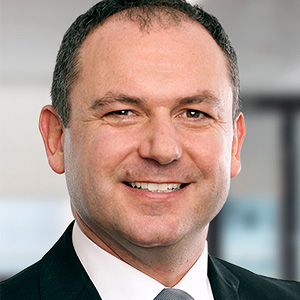How attractive are AdWords brand ads? EYEVIDO and the eMBIS Academy have investigated this issue in an eye tracking study. The result: AdWords brand ads can clearly attract viewers’ interest compared to organic search results. Well-designed advertising content appears relevant and attracts users to click on the respective offer links more quickly. Samples of 130 brands of the YouGov BrandIndexes were examined.
That’s what it’s all about: The added Visibility of AdWords Brand Ads
You don’t book specific keywords for brand advertisements, but instead you use the company or brand name. One goal of Brand Ads is that in addition to the organic search results, another link will appear on the top of the Google search results list.
According to the study, these top positions are highly coveted even by companies that are already very well ranked in the organic search: A total of 56% of the 130 brands surveyed pay for AdWords brand advertisements in addition to the organic searchability of AdWords and thus place value on double searchability: once in the top places, thanks to the brand advertisement, as well as further down in the organic search results. This occurs even though 125 of the 130 brands have already been listed in first place in the organic search.
Result: In spite of organically optimal traceability, large brands also invest in brand advertising. The background was examined in the course of the eyetracking study.
Study progress
With a total of 40 subjects aged between 18 and 31 years, equally male and female, the eye movement, the duration of retention on fixation as well as the following click behavior were investigated. For this purpose, the test persons were presented with differently structured lists of results. Group B, C and D ads have been removed for study purposes. Only in this way could result lists be generated free of brand ads or only with own or external ads to compare the viewing and clicking behavior.
Third-party ads: The problem of hijacking
Foreign advertisements on a brand or company name are referred to as hijacking. An example (illustrated below): The workshop service provider Pitstop posts a brand advertisement with the brand name “Dunlop” – i. e. not on its own brand name, but on a foreign brand name.

Hijacking Ad: The repair shop service provider Pitstop is booking a brand ad with the brand name “Dunlop”
This problem of “kidnapping” a brand name in relation to ad word’s branding ads was included in the study because of its relative frequency: A total of 43% of the brands examined were victims of hijacking.
The results lists for evaluation in detail
In the course of the study, each of the 40 test persons carried out 15 search queries for brands known to them. This ensured that the search was as realistic as possible. For example, a search query was: “Please use the keyword Bauhaus to search for DIY articles in the online shop of the same name as the brand”. The following lists of results were then presented for evaluation:
- Group A: The result list consisted of own and external advertisements
- Group B: The result list consisted only of organic search ads
(without AdWords brand ads) - Group C: The result list consisted only of own ads
- Group D: The results list consisted only of third-party ads
Study Findings 1: Optical perception of Google ads
Basically, the ads were fixed above the organic search results. The following figure illustrates visual attention with the help of a heat map: 45.7% of eye movements fell on the ad block. Only 3 % of the results pages displayed in the course of the study showed no fixations on the ads area.

Result: 35% of the eye movements of the test persons were directed to the ad block. This corresponds to an average residence time of 2.7 seconds.
Study Findings 2: Visual perception and Click Behavior in Brand Advertising (hijacking excluded)
The additional appearance of brand ads above the organic search results leads to a decrease in interest in organic search results lists.
- Excluding brand ads (Group B), the average retention time for the organic search result lists was 5.8 seconds.
- With brand ads, the average time spent in organic search result lists was 4.2 seconds.
However, the situation is different with the relevant search results, i. e. the concrete results of the brands being searched for:
- Excluding brand indications (Group B), the average retention time for organic search results of individual brands was 3.5 seconds. Competitors accounted for the additional length of stay.
- With brand ads, the average retention time for the organic search results of individual brands in Group C (excluding own ads) was 2.7 seconds, plus the retention time on the brand ad of another 2.5 seconds: Total dwell time 5.2 seconds.
- If a brand advertisement appeared in the results of group C (exclusively own advertisements), 33.1% of respondents clicked on the advertisement and not on the organic search result.
Conclusion: Investing in a fire alarm can increase the duration of fixation by more than 50% and reduce the visual perception of external search results by 40%. At the same time, brand advertisements generated costs per click of 33.1% – despite free organic search results.
Study Findings 3: Click behavior
When asked how easy it was to make a click decision, the respondents were able to rate the statement: “The decision for a link was easy for me” from 1 (“I fully agree”) to 5 (“I don’t agree at all”). The decision was made
- Generally at an average value of 1.7
- Without ad (Group B) at an average value of 1.81
- For only foreign ads (Group D) with an average value of 1.86. Duration till click: 10 seconds on average.
- For own and external advertisements (Group A) with an average value of 1.72. Duration till click: 10 seconds on average.
Conclusion: The appearance of a brand advertisement seems to facilitate the click decision, independent of external advertisements. The shortest time till click with an average of 9 seconds was achieved with only own ads (Group C), the second fastest with 9.5 seconds without ads (Group B).
This means: Hijacking ads have almost no influence on the duration of the click if a custom ad is available. If only own advertisements are available, the decision falls up to the click by an average of 0.5 seconds faster.
Study Findings 4: Hijacking ads minimize clicks and attention
Overall, however, hijacking had a detrimental effect on the brands. Examination of the results of only third-party advertisements (Group D) revealed that
- A viewing time of the external ad of on average 1.5 seconds
- 7.86% of clicks on the hijacking ad
- 40 % distraction on the hijacking ads at 0 % fixation on the organic results.
Study Findings 5: Own ads minimize hijacking attraction
Own advertisements above hijackings were able to minimize the attention to the external advertisement from 1.5 to 1.3 seconds on average. In addition, hijackings received only 1.88% of the clicks.
Study conclusion: Brand ads increase user interest by up to 50% and are indispensable for hijacking!

